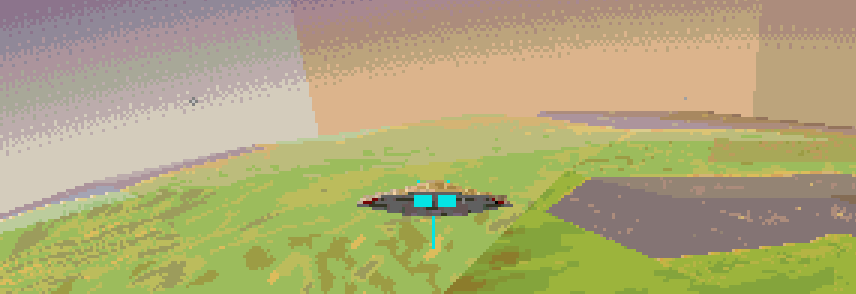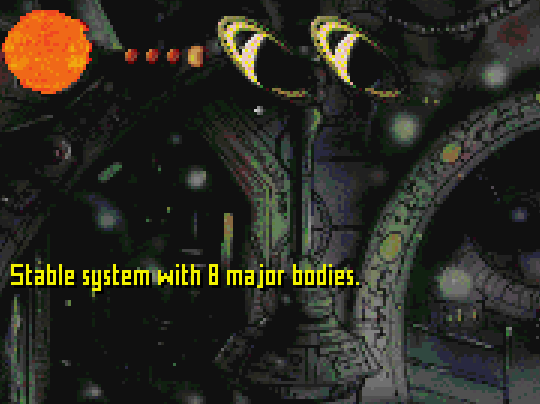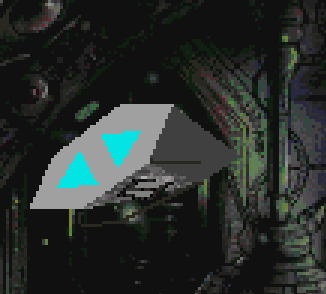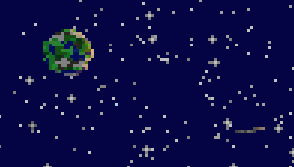







Frontier: First Encounters (1995)
Explore a galaxy of procedurally generated stars and planets!
The third Elite game (legal disputes notwithstanding) was very similar to Frontier: Elite 2. It updated the graphics with procedural texture mapping and it adds more of a plot structure, should you choose to explore that. It also added a few new bugs. Despite those, it’s become a reference implementation for Frontier/Elite style gameplay.
The world of Elite is still fundamentally a lonely one, full-motion-video NPCs notwithstanding. But there are an immense number of planets to potentially visit, and while most of them don’t have a whole lot of extrinsic rewards for doing so, the physics of landing your spaceship at any arbitrary location keeps each planet as a destination, not just something to look at.
The planetary rendering code makes use of progressive tessellation to handle the level of detail changes required to deal with the differences in scale. Due to the tech limitations at the time (on the 386) this creates very visible popping as you fly closer to a planet. This can occasionally make things tricky when you try to land.
The way this exposes the underlying algorithm also has an interesting humanizing effect: the game feels more alive because of this technical limitation. Observing the inner workings of the game makes it easier to understand what is going on, involving the player in the process and facilitating the ergodic agency that is at the heart of the game’s appeal.

Once you are on the ground, the major gameplay element that interacts with arbitrary parts of the surface is the deployable mining machine, which can be used nearly anywhere on the planet. (You get fined if you try to mine near a populated spaceport) While it’s not the most engaging part of the game, it does tie intimately into the minute details of the generator.
If you’re going to design a vast generative landscape, that’s something worth keeping in mind: having some kind of interaction that depends on the details of your generator. Try to give your generator a feel that goes beyond just simple visual looks. It can be an extrinsic reward (as with the mining) or intrinsic (such as the feel of trying to land on the surface) but think beyond the immediate, material appearance and try to give the generator a life beyond its surface representation.
First Encounter’s major intrinsic reward, like with most exploration games, is sightseeing. Because the physics of the planetary orbits are modeled in detail, you can go stargazing: turn on the time compression and watch the stars and planets spin overhead. And while the planets aren’t populated with very many structures or vegetation, they do manage to convey an atmospheric bird’s eye view of countless alien worlds.

